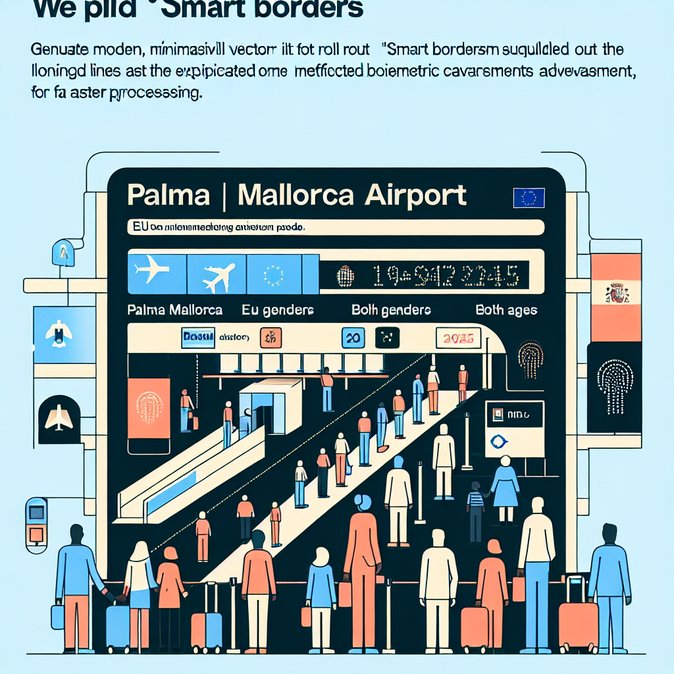
Less than a month after Madrid-Barajas tested the EU Entry/Exit System (EES), Spain is preparing to activate the same biometric controls at Palma de Mallorca Airport, gateway to one of Europe’s busiest island destinations. Local authorities confirmed on 10 November 2025 that full activation is scheduled for 19 November, giving airlines and handling agents just over a week to brief crews and passengers.
Palma handled 31 million passengers in 2024, including more than 3.5 million Britons who, post-Brexit, now fall under the ‘third-country national’ definition. The Balearic government believes the EES will initially lengthen queues as travellers enrol fingerprints and facial images, but will eventually cut average processing times by up to 30 percent once most regular visitors are registered.
![Palma de Mallorca Set to Become Spain’s Next ‘Smart Border’ on 19 November]()
For tourism operators, the transition period is delicate. Hoteliers fear negative first impressions if lines snake into the arrivals hall, while AENA, Spain’s airport operator, has redeployed staff to guide passengers through the new kiosks. The Interior Ministry insists lessons learned in Madrid—including adding multilingual on-screen prompts and placing roaming officers in the self-service zone—will mitigate disruption.
The Palma launch is part of an €83 million national programme that also covers the land borders with Morocco, where a ‘frontera inteligente’ in Melilla debuted in October. All sites must connect to eu-LISA’s central database before 10 April 2026.
Corporate mobility managers should alert EU-bound employees who transit Palma—especially conference delegates and yacht-crew rotations—that they may need extra time on arrival and that first-time enrolment can no longer be waived even for frequent-flyer fast-track members.
Palma handled 31 million passengers in 2024, including more than 3.5 million Britons who, post-Brexit, now fall under the ‘third-country national’ definition. The Balearic government believes the EES will initially lengthen queues as travellers enrol fingerprints and facial images, but will eventually cut average processing times by up to 30 percent once most regular visitors are registered.

For tourism operators, the transition period is delicate. Hoteliers fear negative first impressions if lines snake into the arrivals hall, while AENA, Spain’s airport operator, has redeployed staff to guide passengers through the new kiosks. The Interior Ministry insists lessons learned in Madrid—including adding multilingual on-screen prompts and placing roaming officers in the self-service zone—will mitigate disruption.
The Palma launch is part of an €83 million national programme that also covers the land borders with Morocco, where a ‘frontera inteligente’ in Melilla debuted in October. All sites must connect to eu-LISA’s central database before 10 April 2026.
Corporate mobility managers should alert EU-bound employees who transit Palma—especially conference delegates and yacht-crew rotations—that they may need extra time on arrival and that first-time enrolment can no longer be waived even for frequent-flyer fast-track members.







